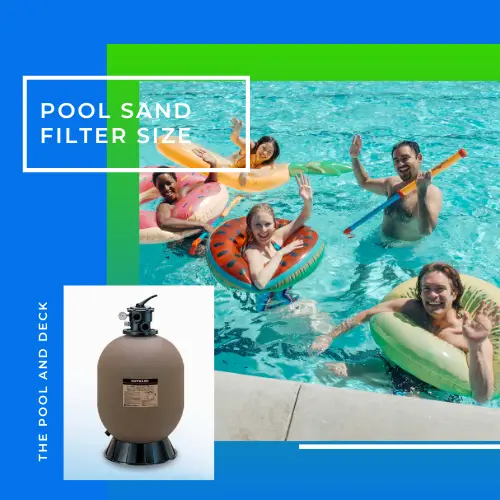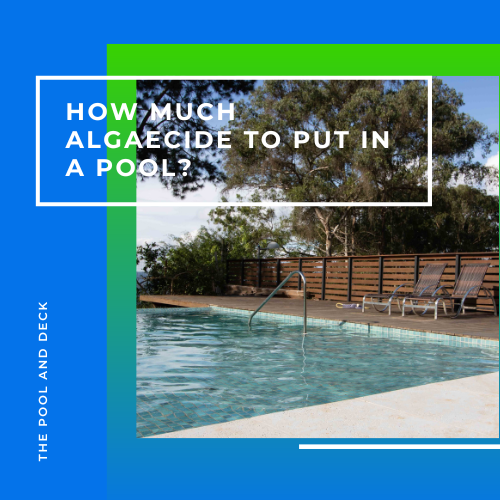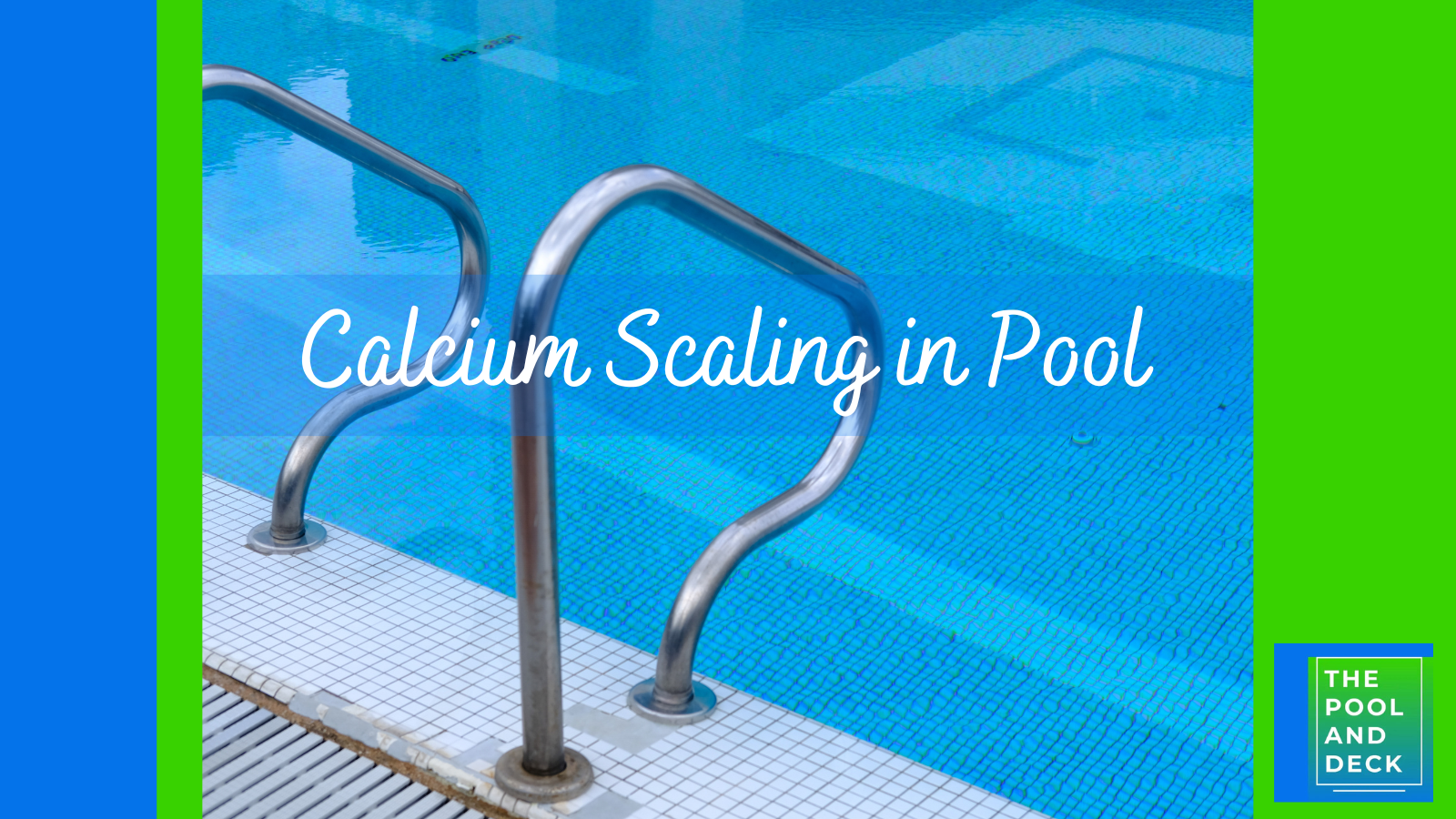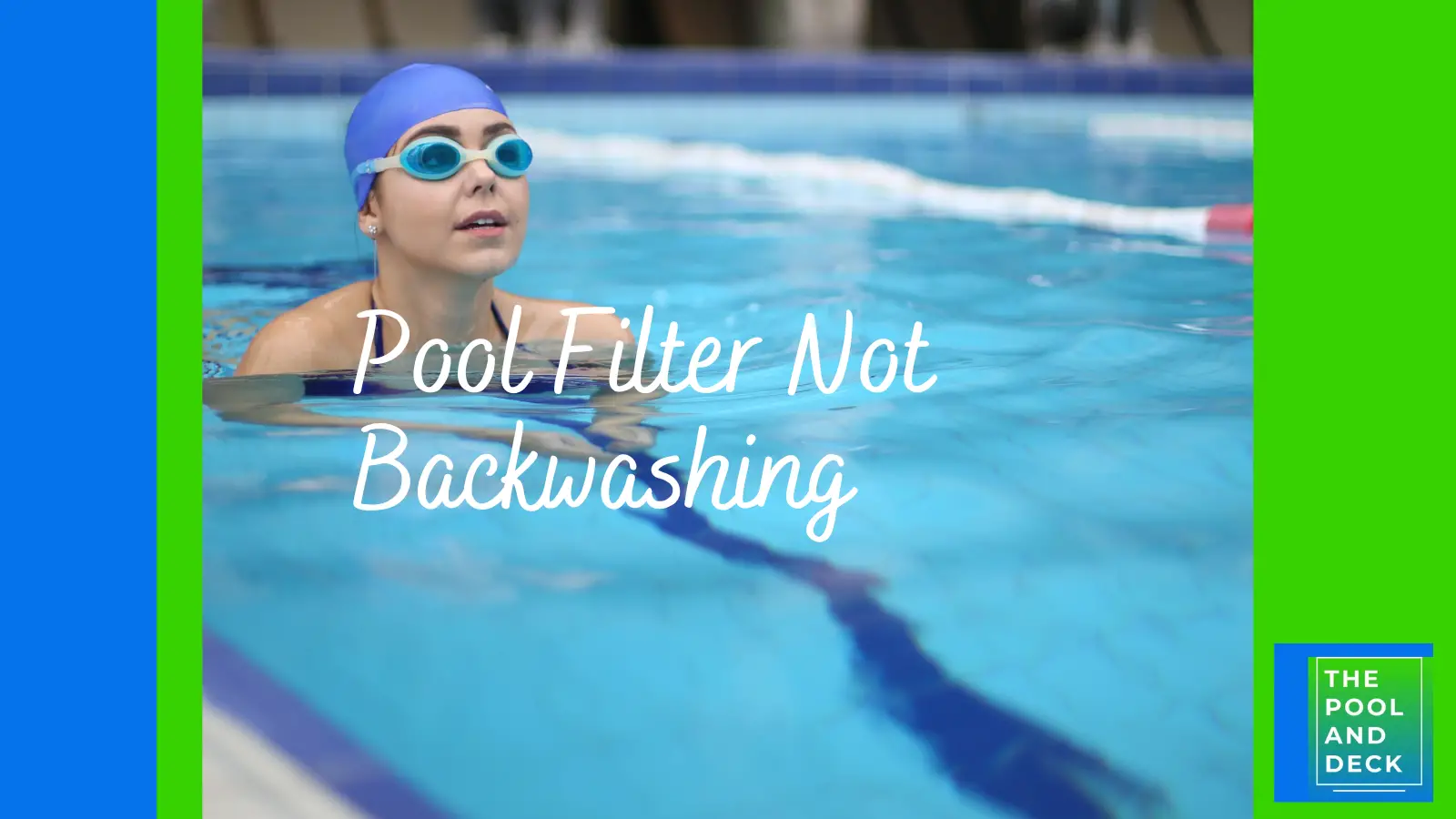What Is The Perfect Pool Sand Filter Size? Expert Advice!
Table of Contents
Pool Sand Filter Size
Did you know that the pool sand filter size plays a crucial role in the efficiency of the pool filtration system? Understanding the importance of pool sand filter size can save you time, money, and a lot of headaches.
The pool sand filter is a vital component of any pool system and choosing the right size filter can make all the difference. Don’t let the wrong size filter ruin your pool experience.
The key to keeping your pool crystal clear lies in choosing the correct pool sand filter size. So what is the correct size for your pool. This post explains all that you need to know!
So let’s dive in.

Pool Sand Filters: How Do They Work?
There are two very important factors that keep your pool safe for swimming and crystal clear for beauty. The pool chemicals, which includes the sanitizer, and the pool filtration system, which includes the pool filter.
There are three types of pool filters, sand filter, DE filter and cartridge filter. Of these the sand filter is the most popular choice for backyard pool owners.
So, what exactly are pool sand filters, and how do they work? Well, a pool sand filter uses sand (or similar alternatives such as zeolite or recycled filter glass) that functions like a sieve. Larger particles such debris & contaminants get trapped while water passes through.

Hayward XtremepowerUS 24″ Pool Sand Filter System
Pool sand filter has sand within a filter tank. Pool water is pumped from the top. It goes down a standpipe and exits through perforations in laterals at the bottom of the sand bed.
As the pressure pushes the water up through the bed of sand, debris & contaminants get trapped and clean water passes through and is returned to the pool.
You can well imagine that the size of your pool, the amount of contaminants in the pool water, the flow rate through the pool sand filter, the pool sand filter size and the pump capacity, are all related to each other.
All these factors must be in sync. Only then can you have a dream pool; crystal clear, safe and inviting!
Importance of Pool Sand Filter Size : Why Size Matters?
The pool sand filter size matters because it is directly related to the amount of water it can filter in a given time period. Manufacturers, such as Haywards, will typically give the following information, pertaining to their pool sand filter size, on their specification sheet:
- Sand Required (pounds): 300 lbs
- Dimension Width (inches): 24 ½”
- Dimension Height (inches): 42”
- Effective Filtration Area (sq. ft.): 3.14 sq. ft.
- Design Flow Rate (GPM): 62 GPM
- Turnover 8 Hrs (Gal): 29,760 Gal
- Turnover 10 Hrs (Gal): 37,200 Gal
The numbers are for HAYWARD ProSeries Model S244T2 and are just for illustration.
The most important information in the above is the Design Flow Rate. It is the volume of water the filter can process in a minute. All other specifications are, in some way or the other, related to the design flow rate.
Naturally the filter dimensions and the sand requirement will be higher for a filter that has a higher design flow rate.
For example, “Turnover 8 Hrs (Gal)” is the volume of water that will flow through the filter if you were to run the filtration system for 8 hours. You can calculate this by multiplying the Flow Rate (GPM) by 480 minutes (8 hours).
In the above case, if the pool size is 20,000 Gal, then, in theory, you will be able to filter all the pool water nearly 1.5 times by running the filtration system for 8 hours.
Of course, your pool filtration system can not be selective of the water that goes through it. So in the example above some of the pool water may get filtered twice, some once and some not at all.
Experts recommend that for a healthy pool, all (or almost all) the pool water should be filtered at least once during the day.
Typically a turnover rate of 3 will ensure that around 95% of the pool water would have been filtered at least once. A turnover rate of 2 will ensure that 86% of the pool water would have been filtered at least once.
Best Practice: Pick a pool sand filter size that will permit 2 – 3 turnovers with 8 hours per day running time.
Pool Sand Filter Size : Factors to Consider
Pool Size
Of course the size of your pool is the most critical factor to consider when you have to choose the right size for your pool sand filter.
A filter that is too small for your pool will struggle to keep up with the filtration demand, while a filter that is too large will increase energy, operating and initial costs unnecessarily.
Based on expert opinion, a pool sand filter size that allows for a turnover rate of 2 – 3, with an 8 hour run per day, should be the right size for your pool.
However, there are other factors to consider.
Peak Loading
The calculations for filter size, based on pool size, assumes normal climatic conditions and swimmer loads. This assumption may not work if you live where it is hot and humid. Your pool is bound to experience a higher occurrence of bacterial contamination and algae growth.
Similarly, if you have a large family or love to throw pool parties every weekend, the contamination levels in your pool are likely to be significantly higher. It is better to go for a filter that is 1 or 2 sizes bigger than what the calculations would indicate.
Pump Size & Flow Rate
The size and the flow rate of the pool pump must be carefully chosen so that it is a good match to the pool sand filter size. Finally, the flow rate through the sand filter depends on the flow rate that the pump generates.
If the pump flow rate is too high for the filter size, it can cause the filter to become clogged often. It may even damage the internal components of the filter. The rate at which debris is pushed through the sand filter may be higher than the filter’s capacity to absorb.
If the pump flow rate is too low for the filter size, then you will not get the desired turnover rate. The pool waters may appear murky and the pool may even be unhygienic.
Remember, a low turnover also means that the pool chemicals that you are adding are not being properly broadcast throughout the pool.
Pool Sand Filter Size Chart
Now that you have an idea of the importance of pool sand filter size, you may wonder if there is a quick and easy way to figure out the right size for your pool.
Well, there is. Just use the pool sand filter size chart as a starting point.
| Pool Size (Gal) | Sand Qty.(lbs) | Filter Dia (Inches) | Flow Rate (GPM) | Turnover (Gal in 8 hrs) | Turnover (Number) | Pump (HP) |
| 10,000 | 250 | 22 ½” | 52 | 24,960 | 2.5 | 1 HP |
| 10,000 | 300 | 24 ½” | 62 | 29,760 | 3.0 | 1 ½ HP |
| 15,000 | 350 | 27” | 74 | 35,520 | 2.4 | 2 HP |
| 20,000 | 500 | 30 ½” | 98 | 47,040 | 2.4 | 2 ½ HP |
| 25,000 | 700 | 35 ¼” | 141 | 67,680 | 2.7 | 3 HP |
Helpful Tips from an Expert:
- If you have the option, go for plumbing with 2” diameter. It results in lower water speed through the system and hence lower turbulence.
- Choose a filter that is slightly oversized. Just run it for less time in normal situations and for the full 8 hours (or more) per day during peak loads.
- Do not go for a pump size larger than required. It will only make your filter clog up faster, requiring more frequent backwashing.
- Take advice from a pool professional or a pool supplies store near you.
Thank you very much for reading the post. I do hope you found it informative and helpful.






